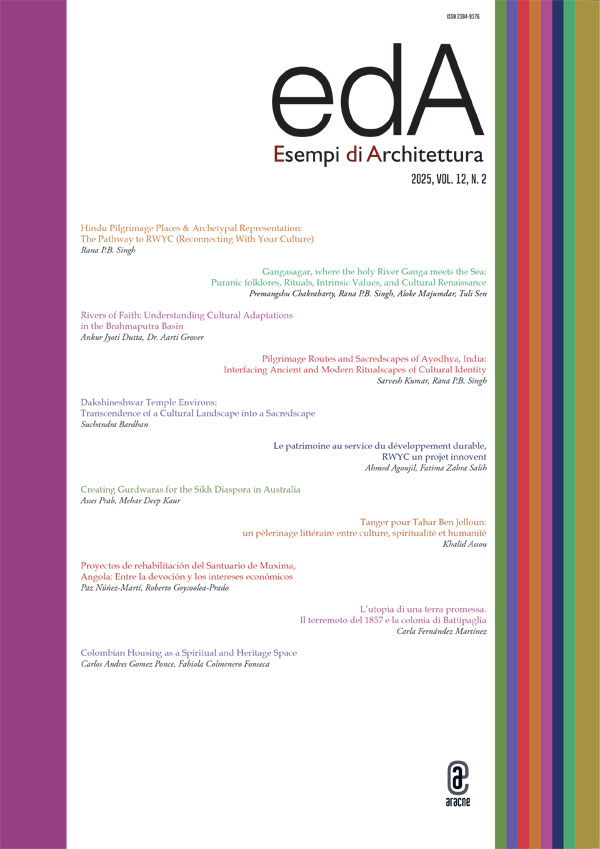Extracted from publication Esempi di Architettura
Hindu Pilgrimage Places & Archetypal Representation: The Pathway to RWYC (Reconnecting With Your Culture)
DOI: 10.53136/97912218172181
Pages: 173-194
Publication date: February 2025
Publisher: Aracne
SSD:
ICAR/14 ICAR/18 ICAR/20 ICAR/21
Hinduism is experienced through its distinct spirituality, the vividness of sacredness, symbolic architecture, and serene landscapes. The temples and shrines in Hinduism preserve the coded sacrosanct messages, consisting of distinctions and a variety of symbols, designs, iconography, aesthetic valuers, mythological contexts, depictions of historical and literary events, and oral traditions. Hindu temples communicate divine and universal messages by unifying and amalgamating these elements and notions. Nine of the 43 UNESCO World Heritage Sites (WHS, July 2024) in India fall in the category of the religious heritage of Hinduism, i.e., Chola temples, Hampi shrines, Mamallapuram, Pattadakal, Khajuraho, Sun temple at Konark, Elephanta caves, Ellora caves, and Hoyasala temples (3 together). To date, 56 properties are listed in the WHS’s Tentative List from India, and 10 of them are associated with Hinduism; they are Bishunpur, Ekambra, Srirangapattam, Kakatiya, Sri Ranganathasvamy Temple at Srirangam, Majuli Island, Bhojeshvara, Sun TempleModhera, Virabhadra, and Kanchipuram. In Southeast Asia, there are five religious WH sites, viz. Prambanan Temple (Indonesia), Angkor Wat (Cambodia), Pashupatinath Temple and other temples (Nepal), Mỹ Son Sanctuary (Viet Nam), and Mother Temple of Besakih (Bali, Indonesia). In most cases, their essential properties represent cultural icons and possess universal values; however, they are still not inscribed in the WHL. The process of ‘getting inscription’ becomes too complicated due to internal politics, governmental priorities, and lack of coordination. As recent discourses identify the unique characteristics and holy-heritage value of Hinduism and its temples, it will affirm the value of the divine (e.g., metaphysical) in the human experience. As a result, pilgrimage and heritage tourism may promote and contribute to global understanding—passing on the pathway to RWYC.


